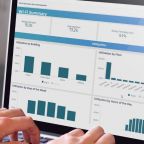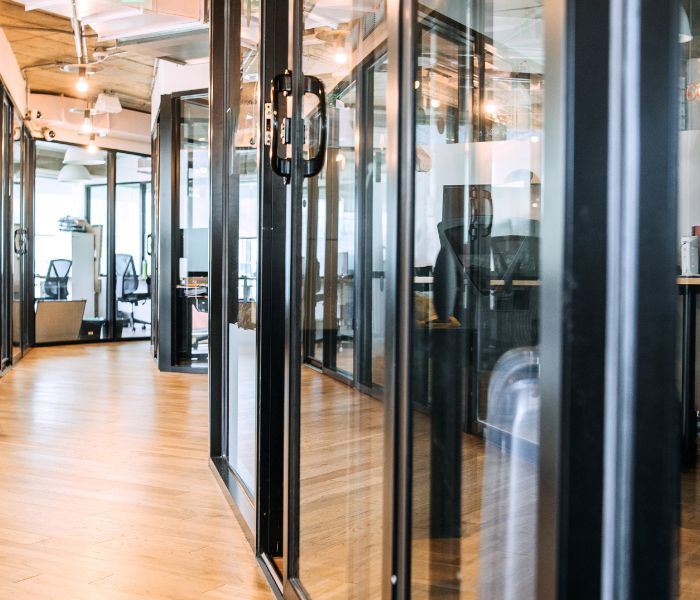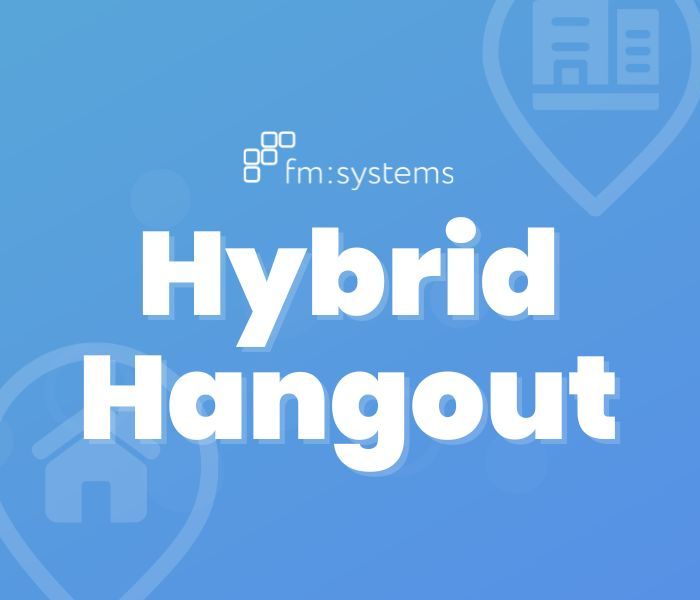During a time of great change and uncertainty, it’s safe to say business leaders have been responding to a mountain of disruptive and chaotic events that largely fall outside of the company’s control. To push into and lead effectively in the new normal, CEOs inevitably have needed to adapt their businesses, workplaces, processes, and solutions. The approach I took was really a four-step process that started with the foundational belief that COVID-19 was both a change-agent and an accelerant to our market’s existing trends. Meaning, it would radically upend certain existing trends and, conversely, provide the oxygen to the fire growing other existing trends.
These steps are not unique to us and not unique to this pandemic. This is a process that can be used by any CEO experiencing change in market dynamics both large and small. In its essence, the process boils down to four questions:
- What trends in your market have been upended and conversely what trends have been accelerated?
- How does your existing solution, with no additional effort, address those advancing trends?
- What quick efforts could be completed and implemented to immediately provide increased value to your customers?
- In this new market, what can you do uniquely to leapfrog your competition and provide outsized value to your customers?
Step 1. Identify what trends have been upended and accelerated.
We saw our first step as identifying the most prominent trends that were accelerating and upending, and understanding the impact they’d have on our clients. Together, these two bucketed categories serve as the foundation for the rest of the process so expect to spend the most time here.
When looking at accelerated trends, the issues and needs that were fast-tracked due to the pandemic, start by addressing the question: “What problems are our clients trying to solve right now?”
For us, this involved looking at what solutions best fit into the future workplace – a place that offers flexibility, safety, and an improved experience for its employees and visitors. We knew tools like reserving a desk prior to commuting in for the day and ways for improving indoor air quality (IAQ) without increasing energy consumption would become increasingly important to our clients.
Not surprisingly, as we all began to think more about frequent, high-touch areas such as door knobs, elevator buttons and light switches, we anticipated an uptick in mobile and touchless technology usage in office buildings. And of course, with the need to meet evolving social distancing and capacity requirements, we considered how clients could more efficiently manage the amount of people using a space compared to the total number of seats available.
For upended trends, run through the same process; only this time ask yourself, “What no longer matters?” These are the trends that had been motivating and important previously, but were completely reversed or smothered by changes brought on by the pandemic.
In our case, that meant determining which trends would no longer be relevant in a post-pandemic office. Take high-density open concept floor plans for instance. Up until March 2020, offices packed with as many people that could possibly fit into rows of side-by-side assigned desks were the popular workplace design for the greater part of the last decade.
Companies are undoubtedly now embracing the reverse – de-densification – as they roll out a hybrid work model where employees can both work from home (WFH) and come into the office parts of the week. With the big WFH experiment proving to be wildly successful in terms of productivity over the last year, two other workplace trends that ended included the daily office commute and on-premise disconnected systems that didn’t sufficiently support remote work.
This step was eye-opening and at times exciting – especially as we explored these with our clients. Take this opportunity to reconnect with your customers and see how these trends align with what they’re experiencing now. They’ll value this level of strategic support, and be less likely to seek out alternative solutions that may or may not be helpful in re-emerging into their new normal.
Step 2. Determine how existing solutions address those trends.
As you move onto step two, take your prioritized list of accelerated needs and match them up to your existing functionalities, services, or products. Limit your discussion to only things that your products or services do today. Keep out the ideation around the possibility of what you could do with new development and effort. Instead, stay laser-focused on the reality and value of right now. Then, encourage your marketing and customer success teams to focus their efforts on communicating these existing values to your current clients and also market them more broadly to prospective clients.
During this step, we knew that as companies emerge from the negative effects from the pandemic, some may consider reducing their IT budgets. However, with the rise of remote and hybrid work, this is absolutely not the time to cut back on certain technology investments. In fact, organizations that experimented with new digital technologies during the crisis – and among those that invested more capital expenditures in digital technology than their peers did – executives are twice as likely to report outsize revenue growth than executives at other companies (according to a recent McKinsey Global Survey).
With this in mind, we worked with our clients to educate them on how they could quickly leverage our workplace technology solutions in different ways to meet their new priorities. To help Health Education England (HEE), which is part of the Department of Health responsible for the education, training and workforce development for health and public health throughout England, we informed them they could use the workplace occupancy sensors already installed at three of their nearly vacant headquarter offices, to create model floor planning scenarios. This allowed them to reconfigure their offices based on actual space utilization, and guaranteed employees who needed to come into the office had an available place to work.
Step 3. Implement quick updates that can provide increased value fast.
Step three is where you should focus on yielding quick, high-value wins. This part of the process is not about thinking big picture or undergoing dramatic major pivots that will take far too long to bring to market. Compare your list of accelerated needs to your current functionalities and ask yourselves, “With a small amount of effort, what new value could we provide?”
To land on development tasks to quickly meet these new client needs, lead your team through two to three sprint exercises. These should be built light, not deep.
For example, look at the restaurant industry. When restaurants were forced to close indoor dining during the pandemic, many that have survived were ones that quickly adapted. They scaled down operations, simplified their menus, and prioritized takeout and food delivery services. These were fast ways for restaurants to both continue servicing and providing value to their customers, even if at a reduced level.
For us, that meant offering congestion alerts to inform key personnel when capacity has been reached. This allows them to not only ensure they’re meeting new capacity requirements, but can also inform employees who may be in transit or planning to go to the office that they should continue working from home.
Similar to HEE, we encouraged other clients that were already using workplace occupancy sensors to start using real-time sensor data to improve their workflows for a modern office environment. Use cases include informing personnel which workspaces have been vacated and thus need to be sanitized before the next team member uses the space.
Step 4. Consider what the larger, longer-term solution needs to be to uniquely provide outsized value to the marketplace.
Finally, review the ideas of the possible – the notions of beyond first order effects and into second and third order effects that would have a more long-lasting impression in your market and business. Ask yourself over and over again, “If this is true, then what? What else has to be true?” This process enabled us to crystalize around a view of the future and gave us foundational truths of what the new normal would look like.
With those foundational beliefs in hand, leverage those employees that are on the front lines with customers as well as customers themselves to determine how the foundation of what you do uniquely applies to this new normal. Imagine a Venn Diagram with your product’s abilities, your competitor’s abilities, and your customer’s needs – where only your abilities and your client’s needs overlap is your new differentiator.
From here, delve into how your business can expand upon what you do uniquely, in order to provide outsized benefits to your clients and leapfrog your competition. These foundational beliefs of what is true in our market along with what we do uniquely now underpin how we look at areas of investment from our product roadmap, to where we spend marketing dollars, to what types of background we look for in new hires.
With a heavy focus on process, balanced out with prioritizing a positive employee experience and customer benefits, this four step process can help CEOs identify blindspots and opportunities — without getting bogged down in a protracted overhaul of their own unique fundamental business model.
Register for our upcoming webcasts.











